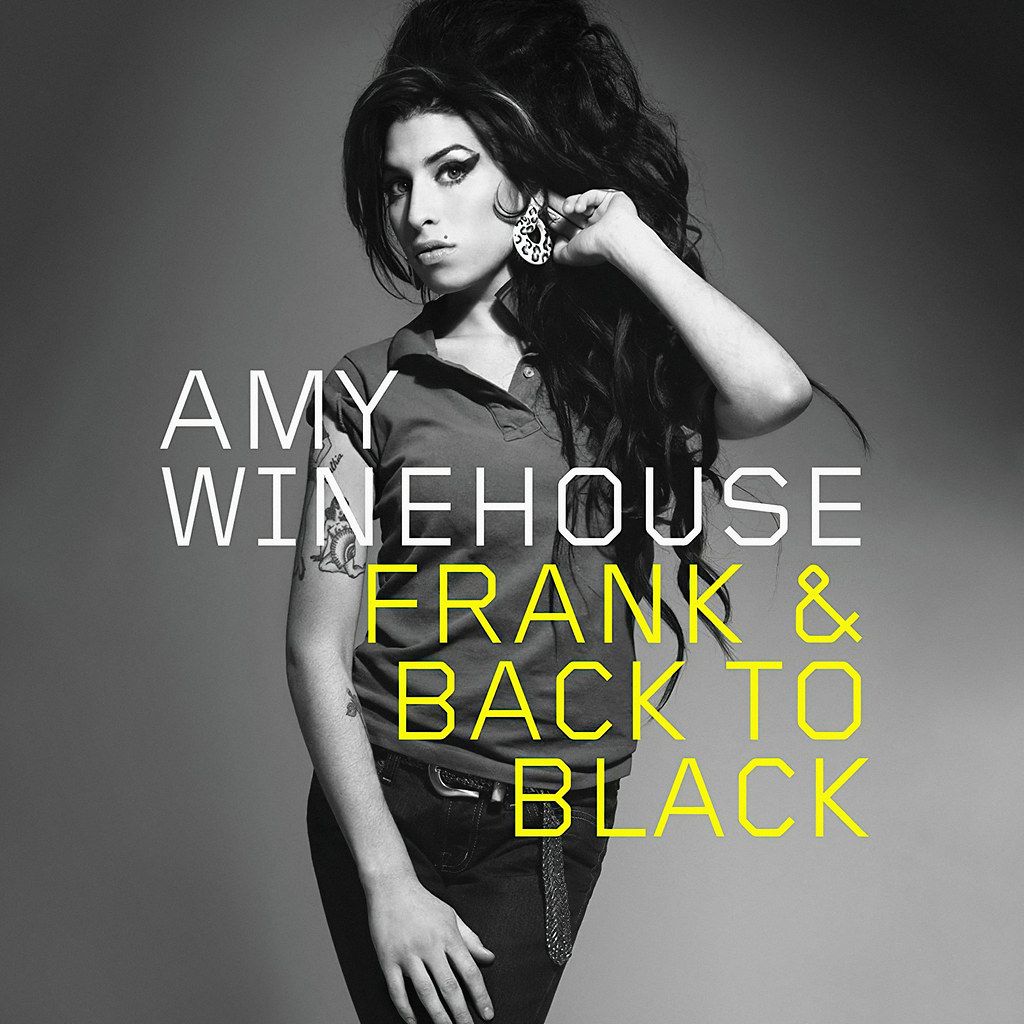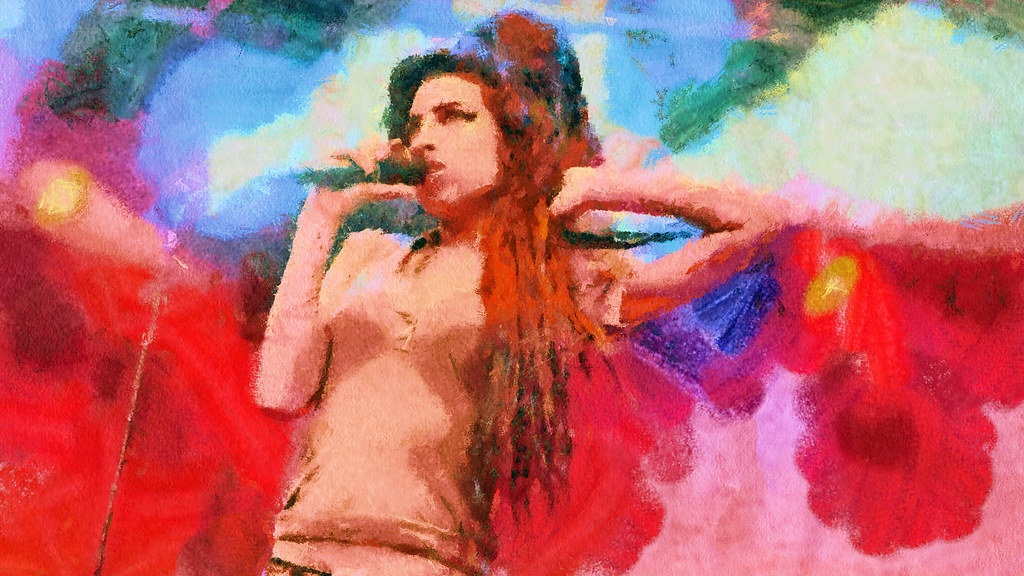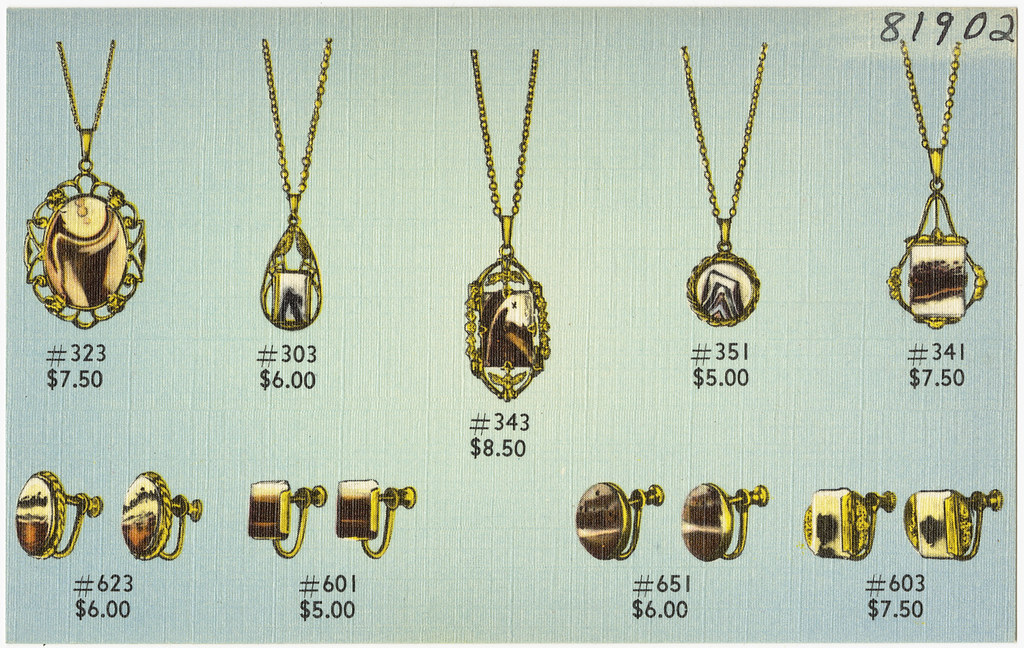
Amy Winehouse. The name itself conjures a vibrant tapestry of raw emotion, unparalleled vocal talent, and an artistic integrity that defied the polished conventions of the 21st-century pop landscape. She was one of those rare artists whose presence transcended music, leaving an indelible mark on culture, fashion, and even societal discourse. From her sharp wit to her soulful attitude, Winehouse stood out, inviting listeners into a world of imperfection and thought-provoking lyrics.
Her untimely passing at the tender age of 27 left an enormous void, yet it cemented a legacy that continues to resonate with legions of fans and countless artists. Winehouse didn’t just sing; she embodied her music, her London-esque honesty a stark and refreshing contrast to much of the overseas popular music of her time. Her deep lyrics and artistic performances, unburdened by mere choreography or catchy riffs, paved the way for a new generation of British talent and irrevocably changed the trajectory of pop music.
While her name often became entangled with controversy, particularly surrounding her abrupt death caused by alcohol intoxication, her profound influence on the music industry remains undeniable. This article seeks to celebrate Winehouse’s brilliance, delving into the vast artistic baggage she left behind and illuminating how different elements of her artistry generated a cultural impact that will persevere over the years. Her importance for music, fashion, and art is incontestable, and we will explore the foundational aspects that built this extraordinary artist.

1. **The Unmistakable Contralto: Defining Amy Winehouse’s Sonic Signature.** Amy Winehouse possessed a voice that was, quite simply, in a league of its own. Described as a distinctive contralto, her vocal instrument was not merely powerful but imbued with an emotional depth and a nuanced expressiveness that allowed her to truly “get under the song,” making it her own rather than just singing it as written. This rare ability captivated audiences and critics alike, setting her apart from her contemporaries and aligning her with the legends she admired.
Her vocal style was a complex tapestry woven from an eclectic blend of genres. While she is most famously associated with soul and rhythm and blues, elements of jazz were profoundly central to her sound from the very beginning. This rich fusion gave her music a timeless quality, allowing it to transcend fleeting trends and establish a sound that was both retro and strikingly modern, fresh and deeply rooted in musical history.
This unique vocal prowess, combined with her autobiographical songwriting, created an intimate connection with her audience. Her delivery conveyed a raw honesty, allowing listeners to feel the genuine emotion behind every note and every lyric. It was this authentic, unvarnished quality that became a hallmark of her artistry, distinguishing her from many others in the industry and cementing her status as a truly singular talent.

2. **Roots of a Soul Siren: Early Life, Influences, and the National Youth Jazz Orchestra.** Born Amy Jade Winehouse on September 14, 1983, in Enfield, London, her Jewish family roots played an understated yet significant role in shaping her early musical sensibilities. Her paternal grandmother, Cynthia, a singer herself who had dated English jazz saxophonist Ronnie Scott, heavily influenced Amy’s burgeoning interest in jazz. Her father, Mitch, a taxi driver, often sang Frank Sinatra songs to her, further immersing her in the soulful world of classic vocalists.
These formative years were steeped in musical exposure. Amy’s maternal uncles were professional jazz musicians, providing a constant backdrop of intricate melodies and improvisational rhythms. It was this familial connection to jazz that instilled in her a deep appreciation for the genre, a foundation upon which she would later build her distinctive style, learning from and practicing songs by jazz greats like Frank Sinatra, Dinah Washington, Sarah Vaughan, and Minnie Riperton.
Her formal training began early, with her grandmother Cynthia suggesting she attend the Susi Earnshaw Theatre School at age nine for vocal education and tap dancing. Later, she sought full-time training at Sylvia Young Theatre School, though stories of her expulsion at 14 for “not applying herself” and piercing her nose were denied by Sylvia Young herself and Mitch Winehouse. By 14, she bought her own guitar and began writing music, quickly joining local groups like the Bolsha Band and, significantly, becoming the featured female vocalist with the National Youth Jazz Orchestra in July 2000, showcasing her prodigious talent from a young age.

3. **”Frank”: The Jazz-Infused Debut that Signaled Genius.** Winehouse’s artistic journey officially commenced with the release of her debut album, “Frank,” on October 20, 2003. This album, primarily produced by Salaam Remi, was a bold statement of her jazz roots and formidable songwriting talent. Apart from two covers, Winehouse co-wrote every song on the album, immediately establishing her as a serious artist with a clear vision and a distinctive lyrical voice.
“Frank” was met with widespread critical acclaim, earning compliments for its “cool, critical gaze” in its lyrics, a testament to her sharp wit and observational prowess. Critics drew parallels between her voice and those of legendary figures such as Sarah Vaughan and Macy Gray, a high praise that underscored the uniqueness and maturity of her vocal performance. The album swiftly found its way into the upper eaches of the UK Albums Chart in 2004, solidifying her presence on the British music scene.
The album’s success extended beyond critical praise and chart performance. “Frank” garnered nominations for the Brit Awards in categories including British Female Solo Artist and British Urban Act, eventually achieving platinum sales. Furthermore, in 2004, Winehouse and Remi were honored with the Ivor Novello Award for Best Contemporary Song for their collaborative single, “Stronger Than Me,” marking an early and significant recognition of her songwriting excellence. The album was also shortlisted for the prestigious Mercury Music Prize, reinforcing its artistic merit. Despite its accolades, Winehouse herself candidly admitted to being “only 80 percent behind [the] album,” revealing that Island Records had overruled her preferences for certain songs and mixes, a telling detail about her unwavering artistic control.

4. **Shifting Sounds: The Evolution from Jazz to Retro Girl Group Inspiration.** Following the profound jazz influences that defined her debut, “Frank,” Amy Winehouse embarked on a pivotal artistic evolution that would ultimately shape her most iconic work. Her focus underwent a distinct shift towards the vibrant, soulful sounds of the 1950s and 1960s girl groups, signaling a new direction that would blend her innate jazz sensibilities with a retro aesthetic. This conscious pivot was a testament to her eclectic taste and her drive to continually explore different facets of musical history.
To bring this new vision to life, Winehouse sought out an authentic sound, leading her to hire Sharon Jones’s longtime band, the Dap-Kings. This collaboration was crucial, providing the rich, authentic, and era-appropriate backing that would characterize her subsequent recordings and live performances. The Dap-Kings’ expertise in vintage soul and R&B instrumentation became an integral part of her evolving sound, adding layers of depth and authenticity to her musical landscape.
This fusion of her raw, jazz-trained vocals with the intricate, harmonically rich arrangements of the Dap-Kings created something truly unique. It was a sound that paid homage to the golden age of soul while remaining distinctly Amy Winehouse, fresh and immediate. This period of artistic reorientation laid the groundwork for the monumental success that was to come, showcasing her versatility and profound understanding of music’s enduring power across decades.

5. **The Genesis of a Masterpiece: Crafting “Back to Black” and the Birth of a Global Sound.** The transition from “Frank” culminated in the creation of “Back to Black,” an album that would not only define Amy Winehouse’s career but also leave an indelible mark on global music. Completed in a remarkably swift five months, this 11-track masterpiece was the result of a collaborative effort between Winehouse and producers Salaam Remi and Mark Ronson, who split the production credits. Ronson, initially perceived by Winehouse as merely a sound engineer expecting an older, bearded man, found in her a blunt and honest artistic partner, appreciating her direct feedback on his work.
The recording process for “Back to Black” was a testament to Winehouse’s intense perfectionism and her deep commitment to her craft. Her father, Mitch Winehouse, vividly recounted in his book, *Amy, My Daughter*, the fascinating process of watching her in the studio. She would meticulously review her recordings, often playing them in his taxi outside to gauge how her music would sound to the average listener, demonstrating an acute awareness of her audience and the sonic impact of her work.
This meticulous approach, combined with the retro-inspired yet contemporary sound crafted by Remi and Ronson, resulted in an album that resonated globally. In May 2006, demo tracks like “You Know I’m No Good” and “Rehab” began circulating on Mark Ronson’s New York City radio show, offering a tantalizing preview of the fresh, genuine talent that audiences were craving, particularly in the wake of reality TV music shows. This preliminary exposure set the stage for the album’s official release and its subsequent explosion onto the international music scene.

6. **”Rehab”: The Signature Anthem that Catapulted Amy to Icon Status.** Upon the release of “Back to Black” in the UK on October 30, 2006, it was the Ronson-produced lead single, “Rehab,” that immediately captured the public’s imagination and became Winehouse’s signature song. The track was an instant hit, quickly soaring into the top ten in both the UK and the US, a testament to its compelling narrative and infectious retro-soul groove. More than just a catchy tune, “Rehab” encapsulated the raw, confessional lyricism that was becoming Winehouse’s trademark.
The song’s lyrics, a direct reflection of Winehouse’s struggles with addiction and her candid refusal to seek formal treatment, struck a chord with listeners worldwide. It was an unapologetic declaration of self, delivered with a mix of defiance and vulnerability that was both shocking and deeply relatable. This fearless honesty, presented within a framework of sophisticated musicianship, propelled her to icon status, forging a powerful connection with her audience that transcended mere entertainment.
“Rehab” garnered widespread critical acclaim, with *Time* magazine famously naming it the Best Song of 2007. Writer Josh Tyrangiel lauded Winehouse for her undeniable confidence, describing her as “mouthy, funny, sultry, and quite possibly crazy.” He emphasized the irresistible originality she exuded and praised Mark Ronson’s production for referencing “four decades worth of soul music without once ripping it off,” concluding that the combination resulted in nothing less than “the best song of 2007.” This recognition solidified “Rehab” as a cultural touchstone and a defining moment in Amy Winehouse’s extraordinary, albeit tragically short, career.

7. **Record-Breaking Triumphs: The Grammy Domination of “Back to Black”.**The release of “Back to Black” was more than just a musical moment; it was a cultural earthquake that culminated in a historic night at the 50th Grammy Awards in 2008. Amy Winehouse, with her inimitable blend of retro soul and unflinching honesty, did not just attend the ceremony – she dominated it, etching her name into the annals of music history with a breathtaking five wins. This achievement saw her tie the then-record for the most wins by a female artist in a single night, a truly monumental feat that underscored the album’s profound impact.
Her triumph included three of the coveted “Big Four” General Field Grammy Awards: Best New Artist, Record of the Year, and Song of the Year, both for her signature anthem “Rehab.” Adding to this staggering tally, she also took home the award for Best Pop Vocal Album. The night was a powerful affirmation of her unique artistry, recognizing not just her vocal prowess but also her exceptional songwriting and the masterful production that shaped her sound. Even Mark Ronson, her collaborative genius producer, received the Grammy Award for Producer of the Year in the non-classical category, highlighting the collective brilliance behind the album.
Despite the physical distance – Winehouse famously performed “You Know I’m No Good” and “Rehab” via satellite from London, unable to secure her visa in time for the Los Angeles ceremony – her presence was palpable. Her acceptance speech for Record of the Year resonated deeply, offering a defiant and heartfelt “This is for London because Camden Town ain’t burning down,” a poignant reference to a recent local fire. This moment, both triumphant and deeply personal, solidified her connection to her roots and her fans, proving that her artistry knew no geographical bounds.
The impact of her Grammy night was immediate and far-reaching, reverberating through the music industry and beyond. In the aftermath, sales of “Back to Black” soared, catapulting the album to the number two spot on the US Billboard 200, a significant jump from its initial peak at seventh position. It was clear that the world had taken notice, not just of a talented singer, but of a true musical force whose work had garnered both critical adulation and immense popular appeal, forever changing the landscape of contemporary music. She was also awarded a posthumous Grammy Award for her album “Back to Black.”

8. **Beyond the Music: Amy Winehouse’s Revolutionary Impact on Fashion and Style.**Amy Winehouse’s influence radiated far beyond the grooves of her vinyl and the airwaves of radio. She was a visual icon, a sartorial force whose distinctive aesthetic became as recognizable and influential as her soulful voice. Her image was a carefully curated rebellion, a blend of retro glamor and unapologetic individuality that captivated audiences and irrevocably altered the fashion landscape of the early 21st century. Her impact on style was revolutionary, proving that true artistry extends to every facet of one’s public persona.
At the heart of her iconic look was the towering beehive hairstyle, a nod to 1960s girl groups and a defiant statement against the sleek, minimalist trends of her era. This was often paired with dramatic, heavy eyeliner, creating a striking cat-eye that exuded both vulnerability and fierce confidence. These signature elements, combined with her eclectic array of retro-inspired clothing – often featuring polka dots, pencil skirts, and vintage silhouettes – coalesced into a style that was both instantly identifiable and endlessly emulated by fans across the globe.
What made Winehouse’s fashion so compelling was its authenticity. Her style was not merely a costume; it was a genuine reflection of her rebellious and unapologetic personality, a visual extension of the raw honesty she poured into her music. It blended vintage charm with a contemporary edge, transcending fleeting trends to establish a timeless appeal. This unique amalgamation of elements solidified her status not just as a music icon, but as a bonafide pop culture figure whose influence permeated the worlds of fashion and art, proving that true originality always finds its own devoted following. Her unique fashion sense helped make her an icon of pop culture.

9. **A Voice for Change: Challenging Beauty Standards and Advocating for Music Education.**Amy Winehouse, in her uncompromising honesty, became an unlikely yet powerful advocate for social change, challenging the prevailing beauty standards of her time and championing the vital cause of music education. In an industry often fixated on manufactured perfection, Winehouse stood as a refreshing counterpoint, her vulnerability becoming a source of strength that resonated deeply with a generation grappling with unrealistic ideals. She proved that authenticity held a power far greater than any facade.
She was remarkably candid about her own struggles with body image issues, speaking openly about her insecurities in a way that was both courageous and deeply relatable. This unapologetic transparency provided an inspiration for body positivity, encouraging others to embrace their own bodies and imperfections in a world that often demanded flawless presentation. Winehouse’s willingness to lay bare her own struggles created a powerful ripple effect, subtly yet profoundly shifting perceptions of beauty and self-acceptance. She challenged conventional beauty standards and became an inspiration for body positivity.
Beyond her personal impact, Winehouse also extended her voice to more formalized advocacy, becoming a vocal proponent for music education. She understood the transformative power of music, particularly for young people, and actively worked to fund music programs for underprivileged youth. Her commitment to this cause was unwavering, inspiring a new generation of artists and ensuring that music education remained a priority in the UK. This dedication highlighted her belief in nurturing talent and providing opportunities, securing a legacy that went beyond her own incredible performances.

10. **The British Invasion: Paving the Way for a New Generation of UK Soul Artists.**Amy Winehouse’s arrival on the global stage was a pivotal moment, marking the genesis of what many would come to recognize as a new British Invasion, a vibrant resurgence of soul and R&B talent from the UK. Her distinctive “London-esque raw and honest music” resonated profoundly, offering a refreshing antidote to much of the mainstream pop dominating the airwaves at the time. She wasn’t just a singer; she was a trailblazer, demonstrating the immense power of authentic storytelling combined with deeply rooted musicality.
Her groundbreaking success created an undeniable pathway for a constellation of British artists who followed in her wake, profoundly influencing their sound and direction. Acts like Adele and Sam Smith, who would later achieve global superstardom, readily drew inspiration from Winehouse’s fusion of soul and R&B, acknowledging her as a foundational figure. She proved that British artists could not only embrace and reinterpret these historically American genres but could also infuse them with a unique, local flavor that captivated international audiences.
Winehouse’s deep lyrics and artistic performances, which transcended mere choreography or catchy riffs, irrevocably changed the trajectory of pop music, particularly within the UK. She set a new standard for artistic integrity and emotional depth, paving the way for a generation of British talents who, like her, prioritized raw expression and musical substance over manufactured polish. Her influence on the UK music scene was nothing short of monumental, redefining what was possible for British artists and igniting a creative renaissance that continues to thrive.

11. **Collaborative Brilliance: Expanding Her Artistic Reach Through Memorable Partnerships.**While Amy Winehouse was a formidable solo artist, her expansive artistic vision also embraced the power of collaboration, leading to memorable partnerships that expanded her musical reach and introduced her unique sound to new audiences. These collaborations were not merely guest appearances; they were genuine artistic dialogues that showcased her versatility and deepened her connection to the jazz and soul genres she so deeply cherished. Each partnership added another vibrant thread to her already rich musical tapestry.
One of her most celebrated collaborations was with Mark Ronson, particularly on the infectious track “Valerie,” featured on Ronson’s solo album, *Version*. Winehouse’s soulful vocals breathed new life into the Zutons’ original, propelling the song to number two in the UK and earning it a Brit Award nomination for British Single of the Year in 2008. This partnership exemplified how her voice could elevate and transform a track, making it distinctly her own while still fitting seamlessly into a broader artistic project, showcasing her incredible adaptability.
Beyond Ronson, Winehouse lent her distinctive voice to other notable projects. She contributed to Mutya Buena’s debut album, *Real Girl*, on the track “B Boy Baby,” further cementing her ties to contemporary British soul. Her artistic reach extended even further with her cover of Lesley Gore’s “It’s My Party” for Quincy Jones’s tribute album, *Q Soul Bossa Nostra*, released in 2010. She also performed with Rhythms del Mundo on their cover of Sam Cooke’s “Cupid” for an Artists Project Earth benefit album, demonstrating her commitment to using her talent for good. These varied partnerships highlighted a musician deeply embedded in a vibrant creative ecosystem, constantly exploring new avenues for her extraordinary vocal gifts. She had even agreed to form a group with Questlove of the Roots, though visa issues delayed their work together.

12. **An Enduring Echo: Winehouse’s Timeless Legacy and Her Place in the Pantheon of Music History.**
Amy Winehouse’s tragically short life belied the colossal and timeless legacy she left behind, an enduring echo that continues to resonate with profound power in the world of music, fashion, and art. Her name, irrevocably linked to raw talent and emotional honesty, signifies an artist who didn’t just sing songs but lived them, pouring her soul into every note and lyric. She was, and remains, a voice that commands attention, a true icon whose influence seems to grow with each passing year.
Her genius lay in her ability to revive classic R&B and soul sounds of the 1960s and 1970s, drawing deeply from greats like Aretha Franklin, Etta James, and Nina Simone, yet infusing them with her own modern twist, incorporating elements of hip-hop and electronic music. This fusion was not merely imitation; it was innovation, introducing a new generation to the soulful sounds of the past while inspiring countless musicians to explore similar stylistic boundaries. Her musical legacy is a vibrant testament to her creativity and individuality, a bridge between eras that remains vibrantly relevant.
Winehouse was a gifted lyricist and storyteller, unafraid to confront themes of love, heartbreak, addiction, and self-destruction with unapologetic honesty. Her raw, confessional lyrics created an unparalleled emotional connection with her global fanbase, making her music deeply personal and universally resonant. This candidness, combined with her unique fashion sense, solidified her status as a pop culture icon. Her persona, often described as a “dichotomy” of entertaining and audacious, yet vulnerable, resonated because she was pure and radiated an unmatched level of energy, proving that true art often emerges from authentic struggle.
Despite her struggles and untimely passing at the age of 27, her artistry has earned her a permanent place in the pantheon of music history. She is consistently listed among the greatest singers of all time, appearing on prestigious lists such as VH1’s “100 Greatest Women in Music” and Rolling Stone’s “200 Greatest Singers of All Time.” The recognition extends to her seminal work, with “Back to Black” being preserved in the National Recording Registry by the Library of Congress in 2025, an honor that underscores its enduring cultural significance. Her music continues to be celebrated, remembered, and felt, her influence a living, breathing force in the work of countless contemporary artists who carry her torch forward.
Amy Winehouse’s journey, though cut short, redefined the very essence of artistry in the 21st century. She shattered conventions, spoke uncomfortable truths, and through her music, forged an unbreakable bond with an audience hungry for authenticity. Her legacy is not just a collection of songs or awards; it is a profound testament to the power of raw talent, fearless self-expression, and the enduring capacity of art to touch, inspire, and transform lives, forever reverberating through the heart of popular culture.



